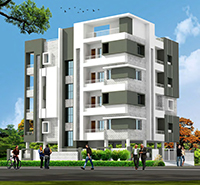Here, we have collated a list of frequently asked questions related to buying property in India, which will help first-time homebuyers in resolving their real estate queries. Should you need any more clarity, feel free to get in touch with us by filling the form provided alongside.
- Check for proper conveyance of Title in favour of the builder.
- Check the license/development right/approvals of the builder.
- Check clear and marketable title of the project.
- Ensure execution of proper Allotment Letter/Sale Agreements on your payments.
- Ensure whether reputed financial companies approve the project. This will help you in getting financial loans.
- Check the tentative layout/building plan and verify the plinth area of the apartment. It is advisable to check the carpet area of the apartment and find out if the difference between plinth area and carpet area is reasonable.
- Ask for Occupation/Completion Certificate.
- Ensure the Conveyance Deed is registered after the entire payment has been made.
- For buying a property you need to check Deed of Conveyance, Mutation Certificate (for complete property), Land Registration Status, Sanction Plan, Search Report and Payment Schedule (for under construction). It is a must that you go through all the documents relating to the origin of the property, chain of Title, Occupancy Certificate, sanctions from various authorities dealing with building plans, fire safety and Completion Certificate.
- For re-sale property, check demand notice relating to renovation, tax dues and latest receipts of payments made towards various out-goings such as water, electricity and ground rent.
Carpet area is defined as the precise area within the walls of your home. If you had to lay out a wall-to-wall carpet in your entire home, the area covered would be the carpet area. Built-up area is inclusive of not just the carpet area but also the area being occupied by the walls of your home.
Super built-up area takes into account all the area under the common spaces which is the apartment's proportionate share of the lobby, staircase, elevator and the corridor outside the apartment.
The housing society share certificate and the sale/purchase deed of the property are the main documents required to sell a residential property. If the property has been sold and bought multiple times, a copy of the previous deeds may be required to prove the authenticity of the deal. Other than these, copies of Stamp Duty and registered house documents will also be needed. In case of property being mortgaged, these papers will be held by the bank and you can use a photocopy of the required documents to initiate a deal. Depending on the kind of property and ownership, some more documents, such as a No-Objection Certificate from the housing society and a documented consent in case of jointly owned property, may be required.
A Sale Deed is a document prepared on the basis of previous ownership document for the transfer of property from seller to buyer, providing the buyer the absolute and undisputed ownership of property.
During the transfer of property from one to another, the stamp paper and registration fee has to be paid which is equivalent to 7 to 8 per cent of the value of the property or those of circle rates. These rates are the notified rates of a particular area set by the government on which the registration charges on the value of the property are calculated.



